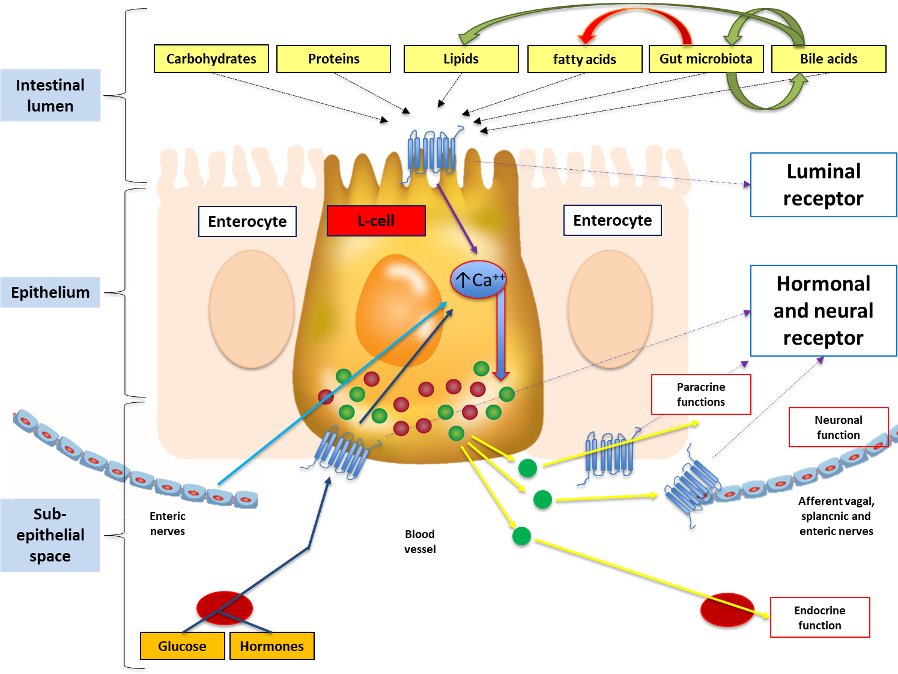
Figure 5. Schematic diagram illustrating the regulation of an L-cell, one of the several EECs present in the GI tract. Nutrients and their interaction with gut microbiota and BAs in the intestinal lumen activate luminal receptors located on the apical cell membrane, which then activate intracellular metabolism leading to calcium influx to induce the synthesis and release of gut hormones into the sub-epithelial space. Luminal receptors includes receptors for short-chain fatty acids (SCFAs) (e.g., GPR41, GPR43), long chain fatty acids (e.g., GPR40, GPR120), proteolytic products (e.g., CaSR) and BAs (e.g., TGR5). Various gut-derived hormones glucagon-like peptide 1 (GLP-1), peptide YY (PYY), and oxyntomodulin (OXM) are synthesized, secreted and released from L-cells systemically to induce an effect on various tissues throughout the body such as the brain. These hormones can act systemically or cooperate with the enterocytes via local paracrine action. Their systemic effects could be endocrine but also neural through the activation of afferent neurons located in the GI wall. The secretion of gut hormones can be stimulated, in turn, by circulating hormones and glucose or by stimulation from enteric nerves.
